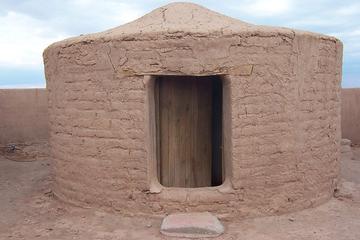
Though it may seem counterintuitive, considering the harsh climate of this impossibly dry, high-altitude region, the Atacama Desert has hosted human settlement for thousands of years. The Tulor Village, as it is known, is one of the most tantalizing archaeological clues these mysterious early settlers left behind.
Only about 10% of the village, a human-sized honeycomb of square and circular adobe structures, has been excavated. The city was occupied by 800BC, and at its peak had several hundred inhabitants. There are few artifacts on hand at the site, but photographers will find the enigmatic earthworks a tempting subject, particularly in the morning or late afternoon.
The Village of Tulor lies about 10 km (6 mi) south of San Pedro de Atacama, itself inhabited some 10,000 years. It is considered the archaeological capital of Chile, and boasts an important historical museum named for Father Gustavo el Paige, the discoverer of Tulor.
The popular destination also caters to travelers with trips to several other top destinations, including Moon Valley, Atacama Salt Lake, Licancabur Volcano, El Tatio geysers, and many other natural wonders.
The city's small airport has regular flights to Santiago and elsewhere in the region, while buses connect the town to Calama, Antofagasta, San Salvador de Jujuy (Argentina), and Uyuni (Bolivia). Many multiple-day tours offer transport between Uyuni as well. You can rent cars in town.